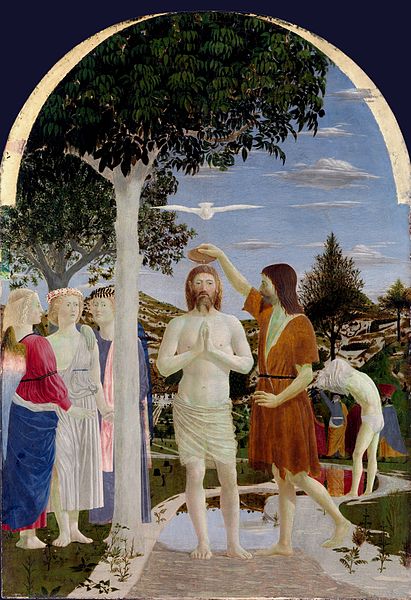Week 10

During our tenth week we will assess the progress of the Renaissance at midcentury. And there is no better figure to represent this year of 1450 than the universal genius of Piero della Francsca. Piero was born in the small town of Sansepolcro near Arezzo. But he came to Florence to study art at the height of the early Renaissance. Other artists working in Florence at the same time included Fra Angelico, Domenico Veneziano, and the two grand old men of the Renaissance: Brunelleschi and Donatello. Botticelli and Leonardo were still little babies; Michelangelo and Rafael were not yet born. Piero shows us not only a spectacular painter but also a mathematical genius whose book on mathematics was studied by all later mathematicians including Leonardo da Vinci.
REQUIRED READING:
RECOMMENDED READING:
This is the masterpiece by our greatest living expert on Piero della Francesca and only one year old. New photographs and a brilliant text. If you love Piero della Francesca as I do, then you will want to own this beautiful book.

James R. Banker,
Piero della Francesca: Artist and Man,
Oxford University Press; 1 edition (April 15, 2014),
ISBN 0199609314
James R. Banker is professor emeritus of Italian history at North Carolina State University, and lives for most of the year in Florence and Sansepolcro. An expert on the life and works of Piero della Francesca and Sassetta, two artists closely associated with San Sepolcro, his research has emphasized the role of lay religion in the lives of early Renaissance Italians, and the role of patrons, lay and clerical, in the paintings of both Sassetta and Piero. Author of numerous articles on Renaissance themes, his books include Death in the Community: Memorialization and Confraternities in an Italian Commune and, most recently, The Culture of San Sepolcro During the Youth of Piero della Francesca.
From a Reader, via Amazon: The great Piero book now is James Banker’s Piero della Francesca, Artist and Man. It is astonishing in many ways. Banker began simply as a historian studying the medieval commune of San Sepolcro, found Piero in that mix, and busied himself writing two books on the documentation, such as it is, of Piero in the town archives. That started maybe 30 years ago. Now he has written about every aspect of Piero––artist, mathematician, possible architect, citizen, family man––connecting many dots, dispelling old hearsay notions, giving a very fine sense of who this Piero may have been, his boundless curiosity and intellectual connections, and how he did what he did. There are parts I disagree with (especially Banker's interpretation of The Flagellation, which all too easily dismisses the Oriental look of the lefthand foregound figure), and you must be prepared for Banker’s rather hard-nosed refusal to see the kind of spiritual (if not Platonic) light that nonetheless many of us cannot help but see. But it is very good history, plainly written––"just the facts," as it were, with straight declarative sentences abounding–– and eventually had me in tears, both for the understanding of Piero himself and for Banker’s devotion.

John Hale,
The Civilization of Europe in the Renaissance,
Scribner, Reprint edition (June 1, 1995),
ISBN 0684803526

Ferdinand Schevill,
Medieval and Renaissance Florence,
Harper Torchbook paperback, 1963, 2 volumes,
ISBN B000PX4SUU
Christmas Vacation: December 21, 2015 through January 1, 2016
Christmas Vacation. No class.
We are off for December 21, and December 28.
Winter Quarter begins Monday January 4, 2016.
